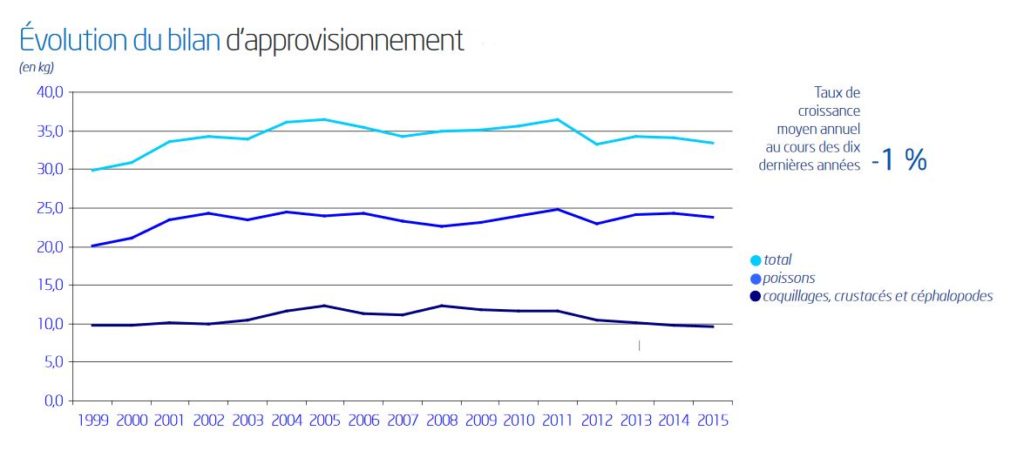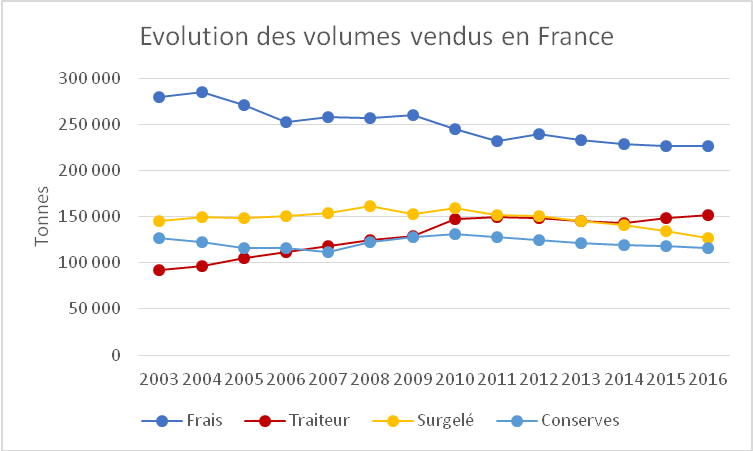Seafood consumption
Global consumption of seafood is constantly increasing. This is the case in Asia, where seafood consumption has risen from 17.9kg to 23kg per person per year in only 10 years. Consumption is also growing in Europe, rising from 19.7kg to 22.2kg per person per year (EUMOFA, 2016). However, in France consumption appears to have stabilised over the past few years, to sit at 34kg per person per year (FranceAgriMer, 2016).

Source FranceAgriMer 2017: The Fisheries and Aquaculture Industry in France
Every year, French consumers spend over €7 billion on seafood: one third on fresh products, one third on delicatessen products and one third on frozen or preserved products. In terms of fresh products, the main species bought (by value) are: salmon, cod and shrimp.
Consumer expectations of fish can be grouped into five trends: enjoyment, safety, ethics, practicality and nutrition/health (Mesnildrey et al. 2009). However, there is a cognitive dissonance/discrepancy (more understandable) between what consumers look for and their buying behaviour. One study showed that consumers are looking for wild fish that is low in fat, filleted, with no bones, and fresh. However, the most purchased product is salmon, which is the fattiest, farmed fish (Mesnildrey et al, 2009).

Source Via Aqua according to Kantar World Panel
In France, the volumes of commercialised fresh products have dropped while the volumes of delicatessen products have grown. Consumers are now looking for more practical products that are easier to prepare, which matches the eat-on-the-go trend and less time spent cooking. That is why some consumers have moved away from whole raw products and now prefer more processed, ready to cook and longer lasting products.
Current topics in the news are:
- Certification labels: Sustainability, origin, quality, farming method, etc. One product can carry many labels. For wild fish caught by sustainable fishing, the MSC certification is the most widely used. For farmed products, origin labels such as AOP and quality certifications such as organic or the French red label can be awarded.
- Product innovation: To make it easier to consume and store products, technological innovations are being developed by processors and include the skinpack and hyperbar technology.